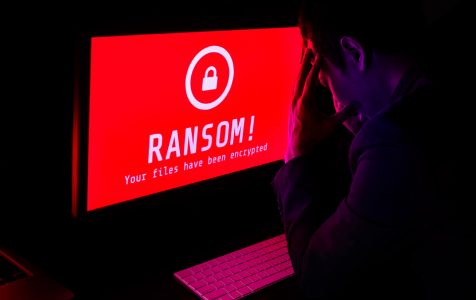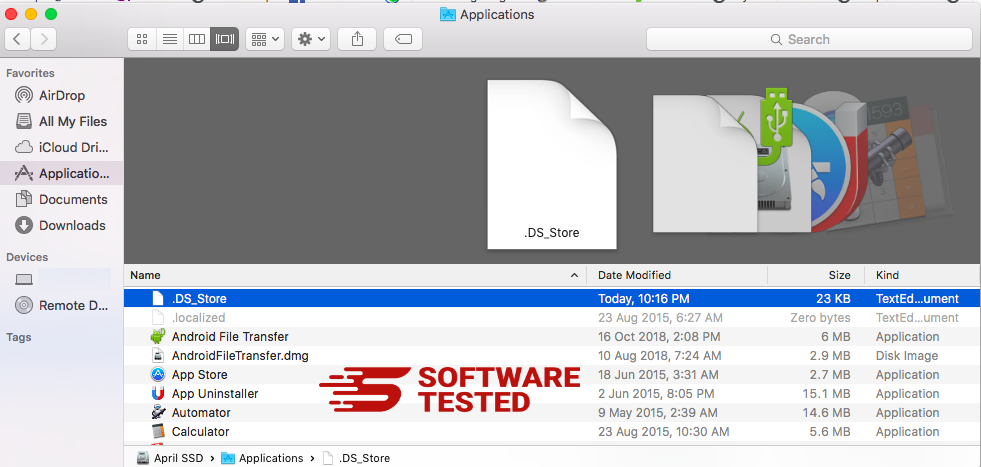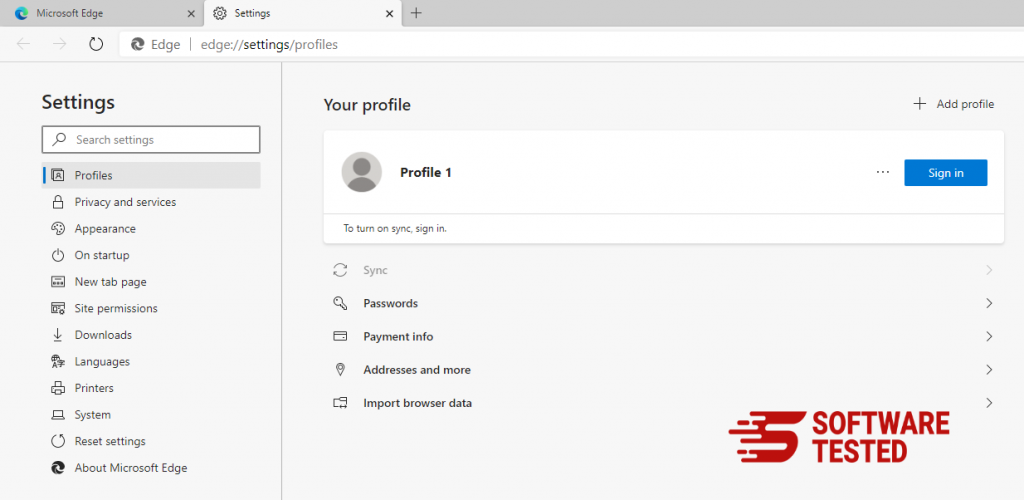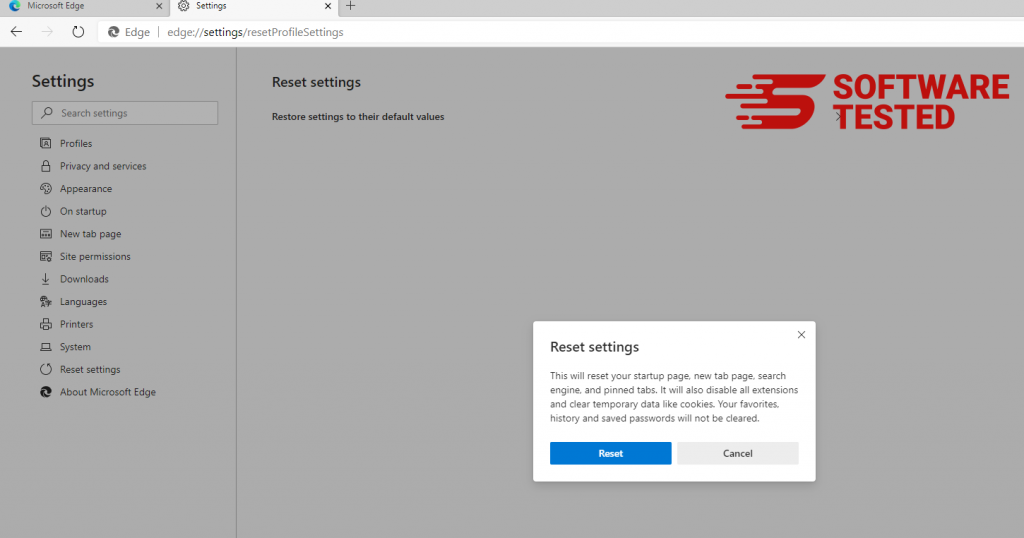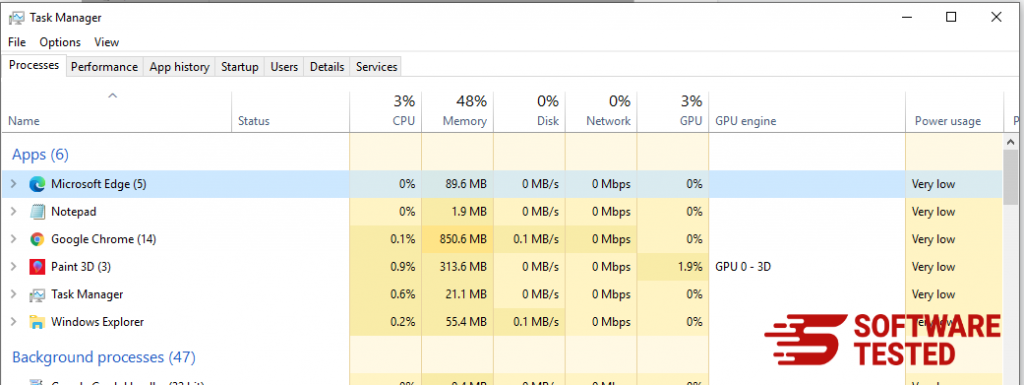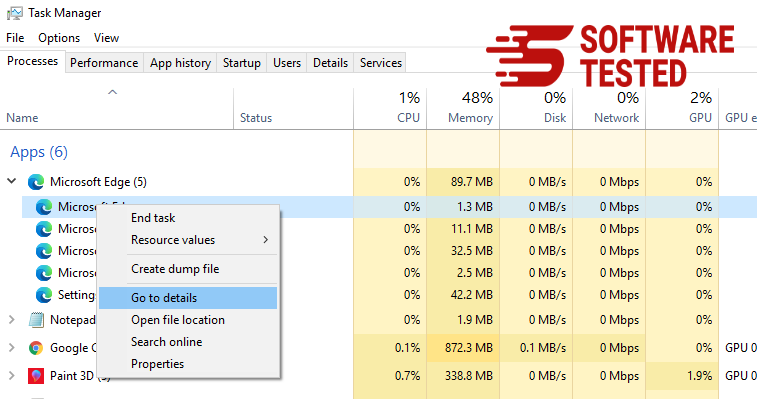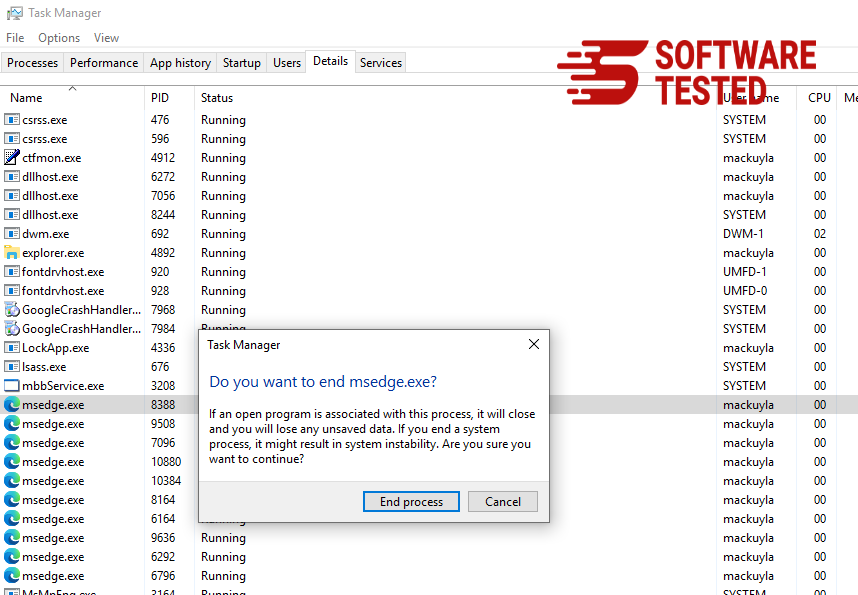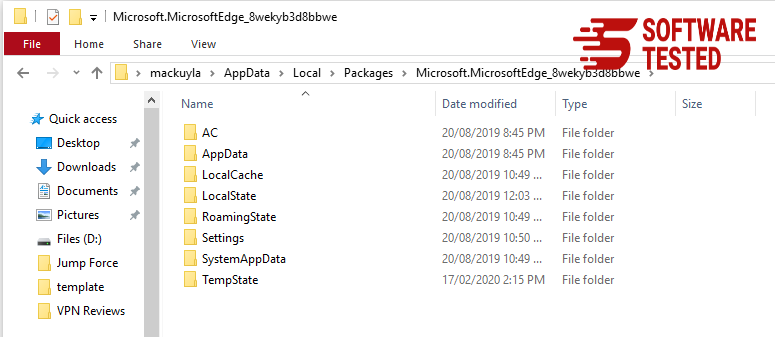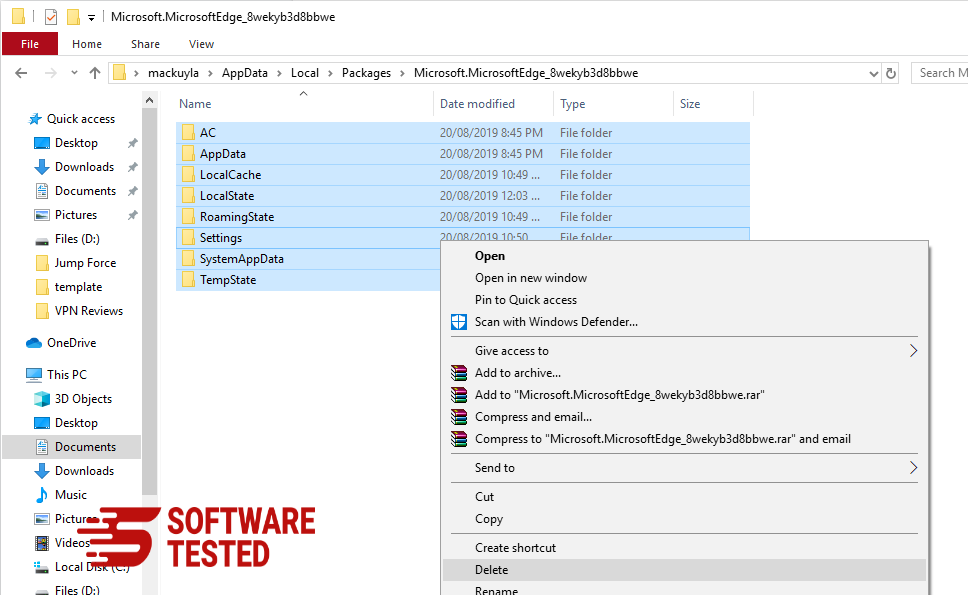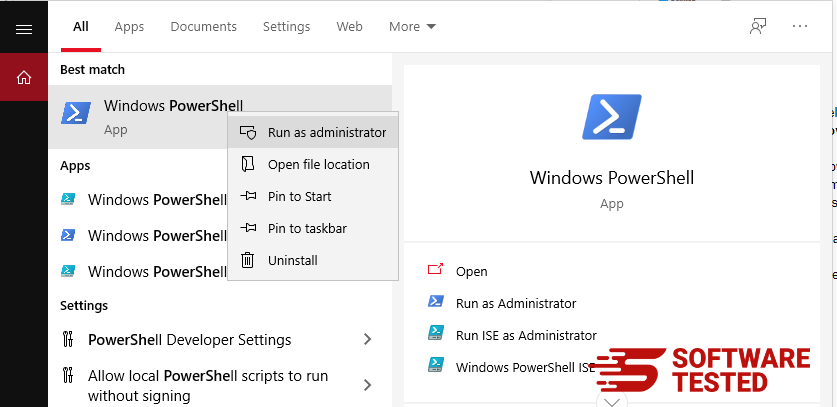What is Kook Ransomware?
If you thought ransom crime only existed in the real world, think twice. The internet is even worse with cases of ransom crime recorded daily. Internet users lose millions of dollars each year to ransomware-related cybercrime. The question is, once affected, can it be removed with the user gaining access to their files again? In this article, we will answer that question by analyzing one of the deadliest ransomware called Kook.
About Kook Ransomware
Kook is a notorious software programmed to infiltrate the system and lock files to keep them hostage so that the orchestrator can demand ransom fee in exchange for the victim’s data redemption. It falls under the Djvu family. Considering that the Kook ransomware is just a fraction of malicious software under this family, most of its features, as well as functionality, is similar to other versions.
As of August 2019, cybercriminals altered the encryption algorithm to RSA from AES. This meant all the decrypting tools that had been established to counter ransomware attacks from members of the Djvu family became antiquated.
What Does Kook Ransomware Do?
Once Kook ransomware infiltrates the system, it locks all files with the .kook extension. The locked files can easily be distinguished from the ransom note which is dropped on the desktop once the encryption of files is completed. The text file is named _readme.txt.
The sad reality is that just like most of the other file-encrypting malicious programs that were developed in 2020, there is little to no hope of recovering the files without paying the ransom fee. Regardless, we advise against paying the ransom fee as there is no guarantee of retrieving your files. Even if the perpetrators demonstrate their capability of decrypting the files in goodwill, refrain from paying any fee to avoid serious financial loss and stress.
In the ransom note, the criminals state options in which victims must select to get in touch with criminals. Particularly for Kook ransomware, the contact email addresses are helpmanager@mail.ch and restoremanager@airmail.cc.
The ransom note says:
ATTENTION!
Don’t worry, you can return all your files!
All your files like photos, databases, documents and other important are encrypted with strongest encryption and unique key.
The only method of recovering files is to purchase decrypt tool and unique key for you.
This software will decrypt all your encrypted files.
What guarantees you have?
You can send one of your encrypted file from your PC and we decrypt it for free.
But we can decrypt only 1 file for free. File must not contain valuable information.
You can get and look video overview decrypt tool:
https://we.tl/t-gSEEREZ5tS
Price of private key and decrypt software is $980.
Discount 50% available if you contact us first 72 hours, that’s price for you is $490.
Please note that you’ll never restore your data without payment.
Check your e-mail “Spam” or “Junk” folder if you don’t get answer more than 6 hours.
To get this software you need write on our e-mail:
helpmanager@mail.ch
Reserve e-mail address to contact us:
restoremanager@firemail.cc
Your personal ID:
Regardless of how desperate you are, you mustn’t comply with these demands. Most victims regret paying the whole amount or even a fraction of what was demanded since the criminals go silent after receiving the payment.
The Kook ransomware can make changes to the system, making the device fail to work normally. It usually blocks data recovery solutions, file restoring options, and manipulates security tools. It attacks any feature or software program that might be handy in recovering data or getting rid of the virus.
This threat is keen on executing malicious activities for as long as it could It also triggers changes the moment it gains access to the system. Once it begins to encrypt files, it would have already done the fundamental work of dislocating any security tools and file recovery solutions. Kook ransomware uses stealthy tactics to ensure it remains undetected until it has completed its mission.
In most cases, victims only notice the existence of Kook ransomware when they start noticing files with .kook extension and a ransom note on the desktop. As mentioned earlier, the message must be ignored because nothing good can come out of contacting the criminals behind the attack. They don’t care about the victim’s files, all that they are after is extorting cryptocurrency by scaring victims.
Out of panic, victims end up paying the ransom fee only to get further disappointed when they don’t receive their files back. According to our experts, victims must not tolerate any demands or engage with the criminals to avoid further loss. Rather, it is best to make a copy of the encrypted files and store them in a remote medium before attempting to remove Kook ransomware. Keeping the encrypted files even if you don’t have an immediate solution will help recover them in the future once a decryptor version that can unlock the .kook encrypted files is released.
How to Remove Kook Ransomware?
Kook ransomware may only display its capability to append files with the .kook extension, but in the background, there are a lot of changes that happen to the system. This is why immediate action must be taken upon discovering it.
If you have backup files stored remotely, then you can proceed with making sure the Kook ransomware is removed entirely and properly. With an external storage device as a backup storage, you can keep your files from being corrupted. Otherwise, you may end up losing all of your data due to secondary encryption.
Kook Ransomware Removal Instructions
The Djvu family is more sophisticated compared to other malware. Instead of simply locking the files to demand a ransom fee for their recovery, ransomware entities such as Kook, take things a step further and inflict more modules, causing more damage than the loss of data. Here are a few reasons why you should be quick to remove the Kook ransomware:
- The variants of Djvu ransomware tend to alter system “hosts” file to prevent the user from getting help from security-oriented sites. This blocks the victim from accessing sites that can help them get out of the situation. In such cases, you must access the address below and get rid of the hosts file:
C:\Windows\System32\drivers\etc\ - Kook ransomware can also steal data from your browser. This means your banking details, login credentials to various sites, as well as other important data, can be compromised.
- Most computers infected with the Kook ransomware show positive results to Trojan AZORult infection. Meaning, more malware entities get installed while Kook ransomware is running in the background.
Once infected, the only hope for file recovery is through a remote backup done before the attack. Without such a backup, your files are gone. However, you can still create a backup of the encrypted files separately.
Now, before you follow our removal process, make sure you have made a backup, scanned the computer for any other viruses and quarantined them, removed any associated apps to the virus, and have a reliable PC Repair tool on standby. Once ready, you can proceed with the instructions below and permanently get rid of the virus:
To delete Kook Ransomware from your device, follow the steps below:
Step 1. Remove Kook Ransomware from Windows
Step 2. Delete Kook Ransomware from Mac OS X
Step 3. Get rid of Kook Ransomware from Internet Explorer
Step 4. Uninstall Kook Ransomware from Microsoft Edge
Step 5. Delete Kook Ransomware from Mozilla Firefox
Step 6. Remove Kook Ransomware from Google Chrome
Step 7. Get rid of Kook Ransomware from Safari
How to Remove Kook Ransomware from Windows
One of the common traits of Kook Ransomware is that they like to pose as legitimate programs or can be bundled with legitimate programs in order to infect your computer. The first thing you need to do when faced with the risk of a Kook Ransomware is to uninstall the program that came with it.
To remove potentially malicious and unwanted programs from Windows and get rid of the Kook Ransomware permanently, follow these instructions:
1. Uninstall malicious programs.
Click on Start, then type in Control Panel in the search box. Click Control Panel from the search results, then click on the Uninstall a program link under Program. The Control Panel looks the same for Windows 7 computers, but for Windows XP users, click on Add/Remove Programs instead.
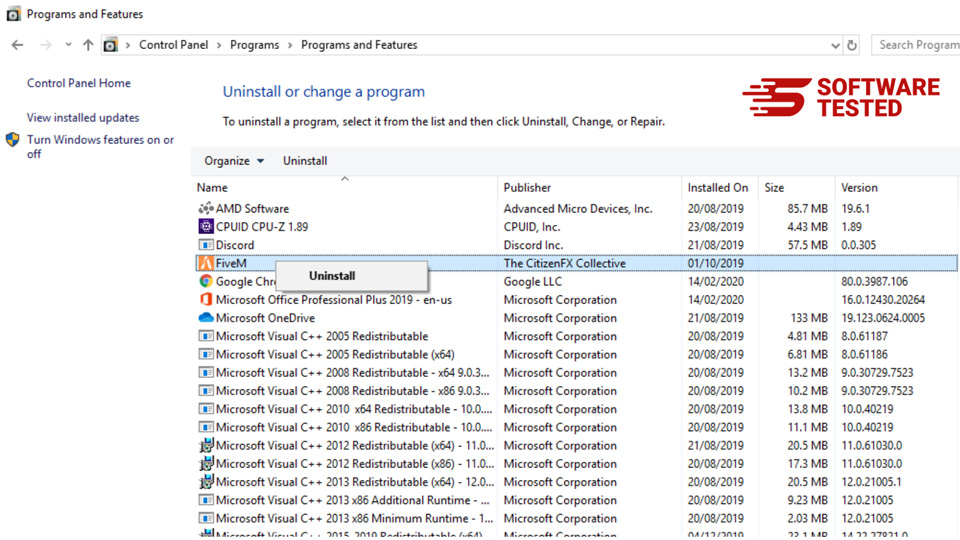
For Windows 10/11 users, you can also uninstall programs by navigating to Start > Settings > Apps > Apps & features.
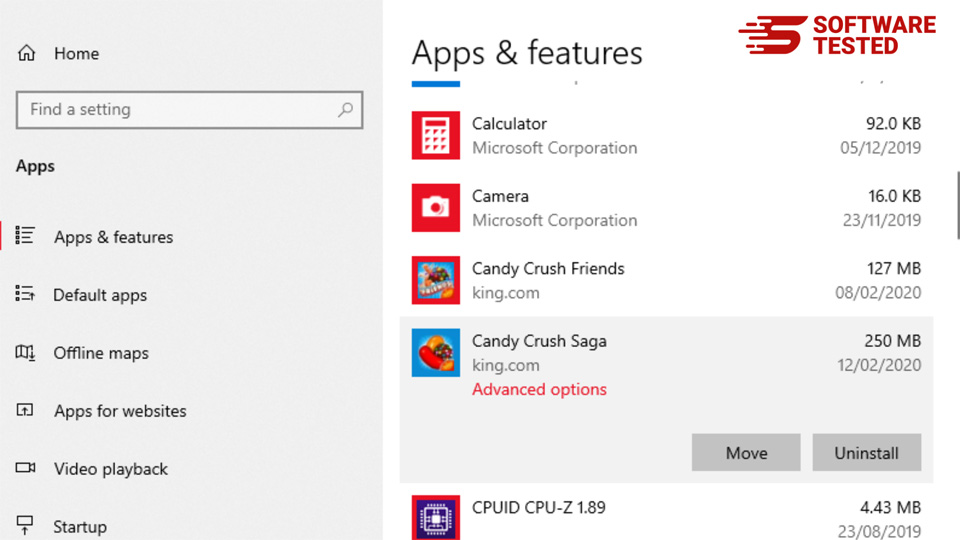
In the list of programs on your computer, look for recently installed or suspicious programs that you suspect to be malware.
Uninstall them by clicking (or right-clicking if you’re in the Control Panel), then choose Uninstall. Click Uninstall once again to confirm the action. Wait for the uninstallation process to be completed.
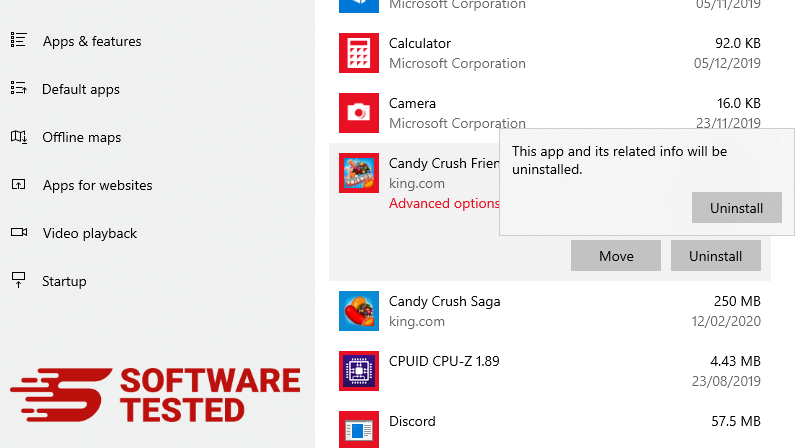
3. Remove Kook Ransomware from Windows shortcuts.
To do this, right-click on the shortcut of the program you uninstalled, then select Properties.

It should automatically open the Shortcut tab. Look at the Target field and delete the target URL that is related to the malware. This URL points to the installation folder of the malicious program you uninstalled.
4. Repeat all the steps listed above for all the program’s shortcuts.
Check all locations where these shortcuts might be saved, including the Desktop, Start Menu, and the Taskbar.
5. Empty the Recycle Bin.
Once you have deleted all the unwanted programs and files from Windows, clean up your Recycle Bin to completely get rid of the Kook Ransomware. Right-click on the Recycle Bin on your Desktop, then choose Empty Recycle Bin. Click OK to confirm.
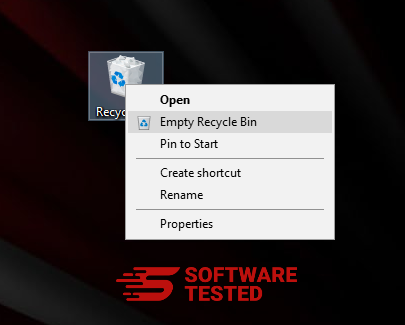
How to Delete Kook Ransomware from macOS
macOS is more secure than Windows, but it is not impossible for malware to be present on Macs. Just like other operating systems, macOS is also vulnerable to malicious software. In fact, there have been several previous malware attacks targeting Mac users.
Deleting Kook Ransomware from a Mac is a lot easier than other OS. Here’s the complete guide:
- If you suspect a recently installed software to be malicious, uninstall it immediately from your Mac. On Finder, click the Go > Applications. You should see a list of all the apps currently installed on your Mac.

- Find the app associated with Kook Ransomware or other suspicious apps you want to delete. Right-click on the app, then choose Move to Trash.

To completely get rid of Kook Ransomware, empty your Trash.
How to Get Rid of Kook Ransomware from Internet Explorer
To ensure that the malware that hacked your browser is completely gone and that all unauthorized changes are reversed on Internet Explorer, follow the steps provided below:
1. Get rid of dangerous add-ons.
When malware hijacks your browser, one of the obvious signs is when you see add-ons or toolbars that suddenly appear on Internet Explorer without your knowledge. To uninstall these add-ons, launch Internet Explorer, click on the gear icon at the top-right corner of the browser to open the menu, then choose Manage Add-ons.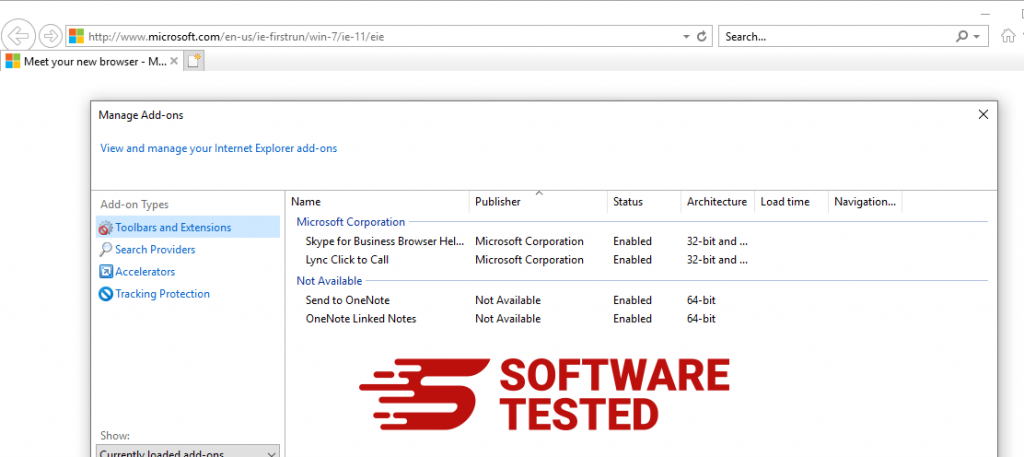
When you see the Manage Add-ons window, look for (name of malware) and other suspicious plugins/add-ons. You can disable these plugins/add-ons by clicking Disable.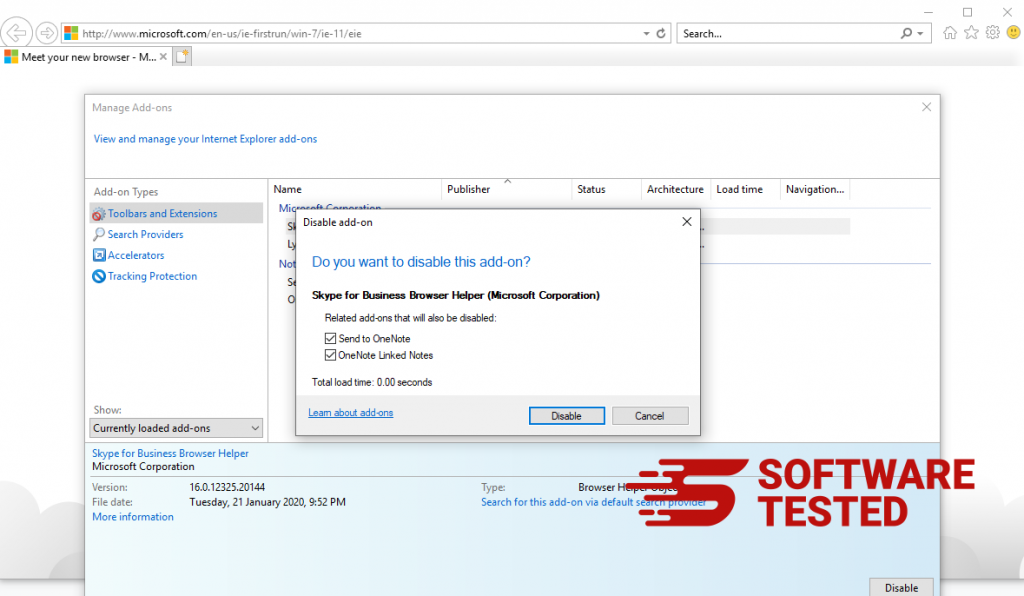
2. Reverse any changes to your homepage caused by the malware.
If you suddenly have a different start page or your default search engine has been changed, you can change it back through the Internet Explorer's settings. To do this, click on the gear icon at the upper-right corner of the browser, then choose Internet Options.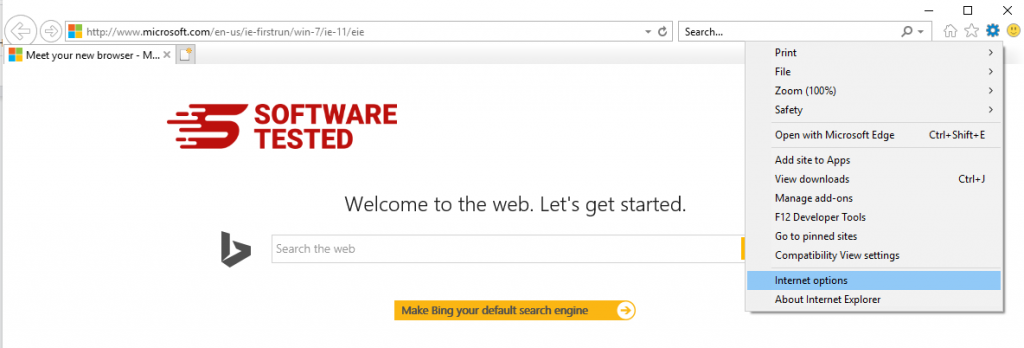
Under the General tab, delete the homepage URL and enter your preferred homepage. Click Apply to save the new settings.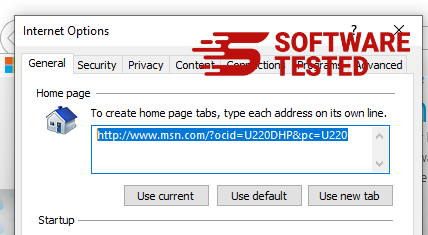
3. Reset Internet Explorer.
From the Internet Explorer menu (gear icon at the top), choose Internet Options. Click on the Advanced tab, then select Reset.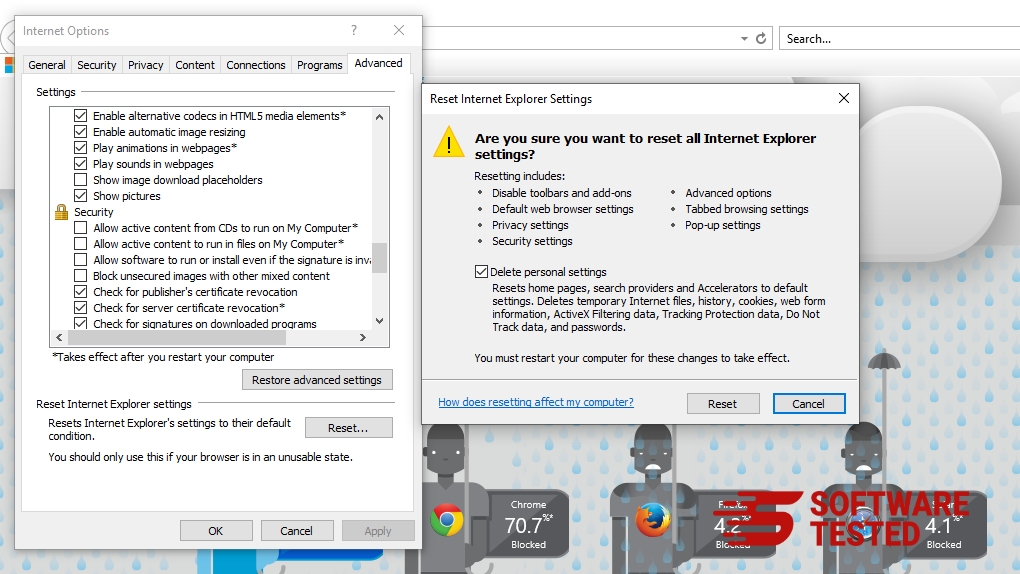
In the Reset window, tick off Delete personal settings and click the Reset button once again to confirm the action.
How to Uninstall Kook Ransomware on Microsoft Edge
If you suspect your computer to have been infected by malware and you think that your Microsoft Edge browser has been affected, the best thing to do is to reset your browser.
There are two ways to reset your Microsoft Edge settings to completely remove all the traces of malware on your computer. Refer to the instructions below for more information.
Method 1: Resetting via Edge Settings
- Open the Microsoft Edge app and click More or the three-dot menu located at the upper-right corner of the screen.
- Click Settings to reveal more options.

- In the Settings window, click Restore settings to their default values under Reset settings. Click the Reset button to confirm. This action will reset your browser’s startup page, the new tab page, default search engine, and pinned tabs. Your extensions will also be disabled and all temporary data like cookies will be deleted.

- Afterwards, right-click on the Start menu or the Windows logo, then select Task Manager.
- Click on the Processes tab and search for Microsoft Edge.

- Right-click on the Microsoft Edge process and select Go to details. If you don't see the Go to details option, click More details instead.

- Under the Details tab, look for all the entries with Microsoft Edge in their name. Right-click on each of these entries and choose End Task to quit those processes.

- Once you have quit all those processes, open Microsoft Edge once again and you'll notice that all the previous settings have been reset.
Method 2: Resetting via Command
Another way to reset Microsoft Edge is by using commands. This is an advanced method that is extremely useful if your Microsoft Edge app keeps crashing or won't open at all. Make sure to back up your important data before using this method.
Here are the steps to do this:
- Navigate to this folder on your computer: C:\Users\%username%\AppData\Local\Packages\Microsoft.MicrosoftEdge_8wekyb3d8bbwe.

- Select everything inside the folder, right-click on the highlighted files, then click Delete from the options.

- Search for Windows PowerShell using the search box beside the Start menu.
- Right-click on the Windows PowerShell entry, then choose Run as administrator.

- In the Windows PowerShell window, type in this command:
Get-AppXPackage -AllUsers -Name Microsoft.MicrosoftEdge | Foreach {Add-AppxPackage -DisableDevelopmentMode -Register $($_.InstallLocation)\AppXManifest.xml -Verbose}
- Press Enter to execute the command.
- Once the reset process has been completed, Kook Ransomware should be completely deleted from your Microsoft Edge browser.
How to Delete Kook Ransomware from Mozilla Firefox
Just like other browsers, malware tries to change the settings of Mozilla Firefox. You need to undo these changes to remove all traces of Kook Ransomware. Follow the steps below to completely delete Kook Ransomware from Firefox:
1. Uninstall dangerous or unfamiliar extensions.
Check Firefox for any unfamiliar extensions that you don't remember installing. There is a huge chance that these extensions were installed by the malware. To do this, launch Mozilla Firefox, click on the menu icon at the top-right corner, then select Add-ons > Extensions.
In the Extensions window, choose Kook Ransomware and other suspicious plugins. Click the three-dot menu beside the extension, then choose Remove to delete these extensions.
2. Change your homepage back to default if it was affected by malware.
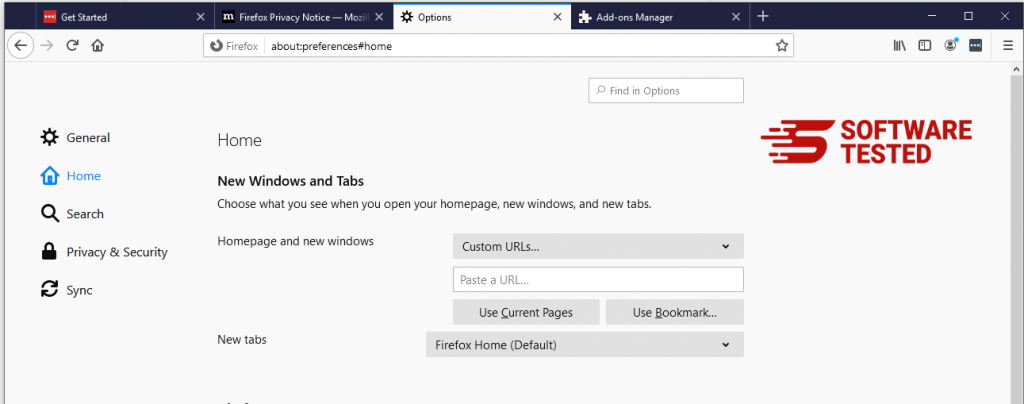
Click on the Firefox menu at the upper-right corner of the browser, then choose Options > General. Delete the malicious homepage and type in your preferred URL. Or you can click Restore to change to the default homepage. Click OK to save the new settings.
3. Reset Mozilla Firefox.
Go to the Firefox menu, then click on the question mark (Help). Choose Troubleshooting Information. Hit the Refresh Firefox button to give your browser a fresh start.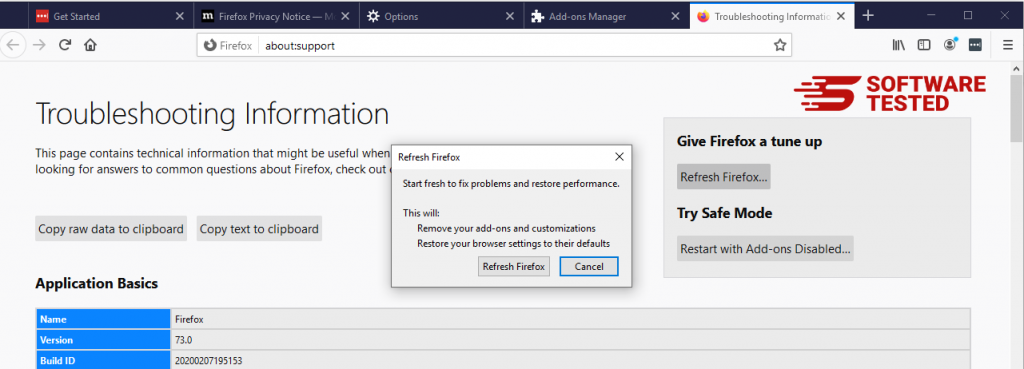
Once you’ve completed the steps above, Kook Ransomware will be completely gone from your Mozilla Firefox browser.
How to Remove Kook Ransomware from Google Chrome
To completely remove Kook Ransomware from your computer, you need to reverse all of the changes on Google Chrome, uninstall suspicious extensions, plug-ins, and add-ons that were added without your permission.
Follow the instructions below to remove Kook Ransomware from Google Chrome:
1. Delete malicious plugins.
Launch the Google Chrome app, then click on the menu icon at the upper-right corner. Choose More Tools > Extensions. Look for Kook Ransomware and other malicious extensions. Highlight these extensions you want to uninstall, then click Remove to delete them.
2. Revert changes to your homepage and default search engine.
Click on Chrome's menu icon and select Settings. Click On Startup, then tick off Open a specific page or set of pages. You can either set up a new page or use existing pages as your homepage.
Go back to Google Chrome's menu icon and choose Settings > Search engine, then click Manage search engines. You'll see a list of default search engines that are available for Chrome. Delete any search engine that you think is suspicious. Click the three-dot menu beside the search engine and click Remove from list.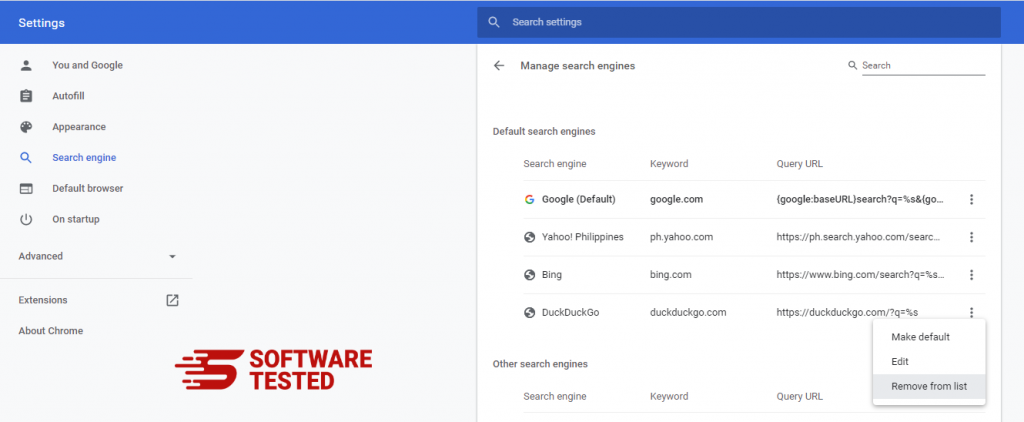
3. Reset Google Chrome.
Click on the menu icon located at the top right of your browser, and choose Settings. Scroll down to the bottom of the page, then click on Restore settings to their original defaults under Reset and clean up. Click on the Reset Settings button to confirm the action.
This step will reset your startup page, new tab, search engines, pinned tabs, and extensions. However, your bookmarks, browser history, and saved passwords will be saved.
How to Get Rid of Kook Ransomware from Safari
The computer’s browser is one of the major targets of malware — changing settings, adding new extensions, and changing the default search engine. So if you suspect your Safari to be infected with Kook Ransomware, these are the steps you can take:
1. Delete suspicious extensions
Launch the Safari web browser and click on Safari from the top menu. Click Preferences from the drop-down menu.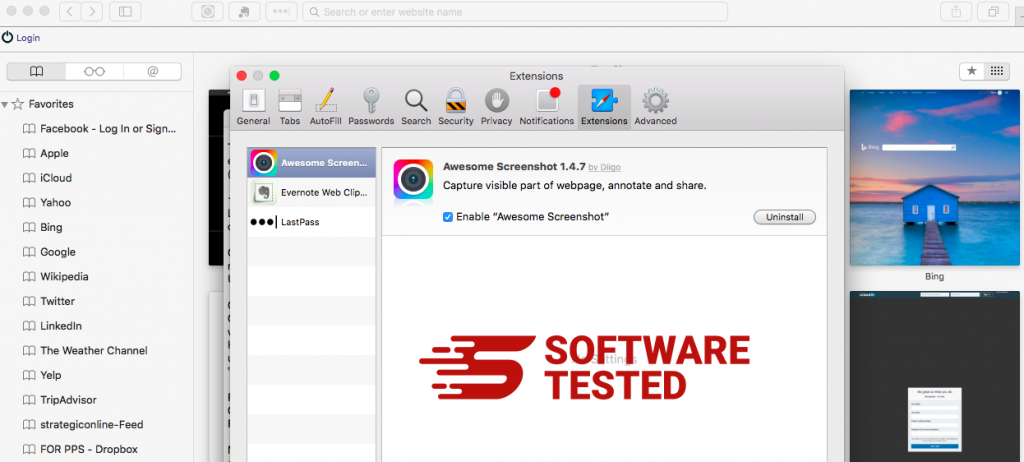
Click on the Extensions tab at the top, then view the list of currently installed extensions on the left menu. Look for Kook Ransomware or other extensions you don’t remember installing. Click the Uninstall button to remove the extension. Do this for all your suspected malicious extensions.
2. Revert changes to your homepage
Open Safari, then click Safari > Preferences. Click on General. Check out the Homepage field and see if this has been edited. If your homepage was changed by Kook Ransomware, delete the URL and type in the homepage you want to use. Make sure to include the http:// before the address of the webpage.
3. Reset Safari
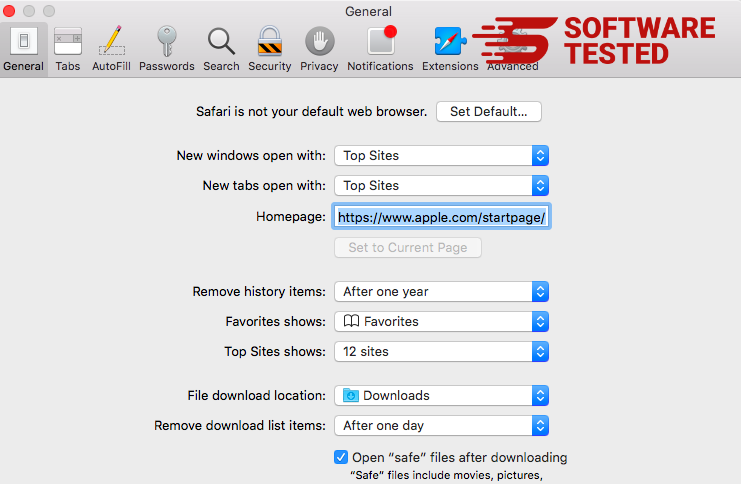
Open the Safari app and click on Safari from the menu at the upper-left of the screen. Click on Reset Safari. A dialog window will open where you can choose which elements you want to reset. Next, click the Reset button to complete the action.
